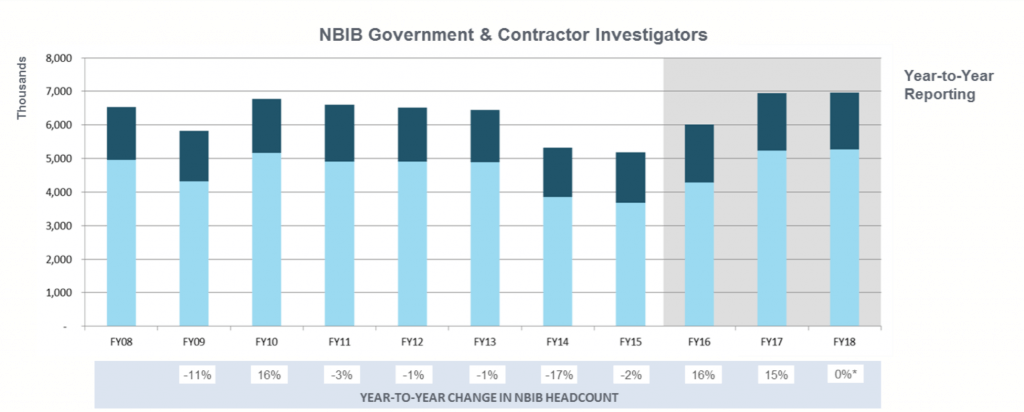One of the big complaints about the security clearance process is the time it takes to complete a background investigation. Among the suggestions made to improve the situation is to simply hire more background investigators – those who conduct interviews and take part in the process.
But the number of investigators may not be the problem. According to a review from last year, the National Background Investigations Bureau (NBIB) has been working to hire more investigators while developing new tools to help with the process. The recent slight uptick has not solved the backlog has largely not been resolved, and wait times have extended to more than 530 days for a Department of Defense Top Secret Security Clearance.
How Many Investigators Are There?
NBIB hired about 400 investigators in 2016 and it was on track to hire about 180 more last year.
“Currently, there are approximately 8,100 individuals who conduct field investigative activities in support of the National Background Investigations Bureau (NBIB) mission, which conducts approximately 95 percent of the federal government’s background investigations,” a spokesperson from the Office of Personnel Management (OPM) told ClearanceJobs. “NBIB relies on a mixture of both federal and contract investigators to enable the flexibility and geographical coverage needed to meet the needs of the mission.”
A recently released report from The President’s Management Agenda noted the number of NBIB investigators increased 16 percent year-over-year, with another 15 percent year-over-year increase in 2017. This includes both NBIB federal investigators as well as contractor investigators.
Based on this data it would seem there are more investigators than ever before. However, these numbers are a bit deceiving too. In fact, there were as many investigators in 2010 as there are today, but from 2011 to 2014 there has been a 22 percent decrease – with 2014 seeing a 17 percent year-over-year decrease.
Quis Custodiet Ipsos Custodes?
To paraphrase the famous Latin quote – which can be literally translated to “Who will guard the guards themselves?” – we can then ask how exactly does one become a security background investigator?
OPM credentials all federal investigators, and applicants must first apply, and then be certified, either directly with the federal government or with one of the four investigative service providers.
After being credentialed as a federal contractor investigator, individuals must pass a pre-employment drug test and agree to travel to within a 100-mile radius as the job requires. The scope includes conducting investigations on those seeking federal employment including those requiring initial security clearance and those requiring re-investigation.
“Investigators come from a variety of professional and educational backgrounds and have demonstrated skills in interpersonal communication and relationship building, oral communication, written communication, research, and an ability to plan and evaluate work,” noted the OPM spokesperson. “When a federal position becomes available, it is posted on USAJOBS.gov with information about the positions duties, responsibilities, and qualifications. Contractor positions are posted by the investigative vendors supporting the government-wide mission. Field investigators must successfully complete a national security background investigation and a comprehensive certified training program that includes both written and practical examinations.”





